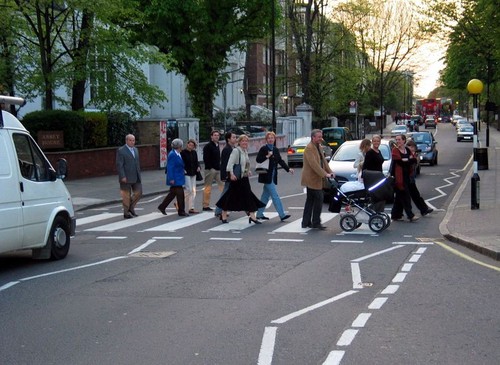На главную
- Мариуполь
- Украина
- Мариуполь
- Луганск
- Крым
- Херсон
- Одесса
- Николаев
- Запорожье
- Днепропетровск
- Харьков
- Сумы
- Чернигов
- Житомир
- Киев
- Луцк
- Львов
- Полтава
- Черкассы
- Кировоград
- Черновцы
- Тернополь
- Хмельницкий
- Винница
- Ужгород
- Ивано-франковск
- Ровно
- Севастополь
Почему пешеходный переход называется зеброй и рисуют полосы?
Главная -> Энциклопедия ->Почему пешеходный переход называется зеброй и рисуют полосы?
Из Английской Википедиипо английски но вкратце Зеброй переход называется из-за схожести с раскраской одноименного животного, впервые возник такой переход в 1949 году в Великобритании одновременно в 1000 местах. До этого переходы обозначались "Belisha beacons" Этакими рыжими фонарями в полосочку, но для увеличения заметности для водителей и была введена дополнительная "полосатая" раскраска дороги.
Также вам будет интересно: Какой самолет (тип, марка, авиаконструктор) во Второй мировой войне немцы называли "черной смертью"
 |
Вот здесь видна в Англии и зебра и фонарь -"Belisha beacons"
A zebra crossing is a type of pedestrian crossing used in many places around the world. The crossing is characterised by longitudinal stripes (hence the term, named after the zebra) on the road, parallel to the flow of the traffic, alternately a light colour (usually white) and a dark one (painted black, or left unpainted if road surface itself is of a dark colour). The stripes are typically 40 to 60 centimetres (16 inches to 2 feet) wide. Pedestrians always have right of way on a zebra crossing.
The zebra crossing was first used (after some isolated experiments) at 1000 sites in the UK in 1949 (the original form being alternating strips of blue and yellow), and a 1951 measure introduced them into law. In 1971, the Green Cross Code was introduced to teach children safer crossing habits (replacing an earlier "kerb drill").
In the United Kingdom the crossing is marked with Belisha beacons on each side of the road. The beacon is a black and white pole topped by a flashing amber globe. They are named after Leslie Hore-Belisha, the Minister of Transport who introduced them in 1934. Pedestrians have right of way on this type of crossing; road traffic must give way to them.
The crossings were originally marked by beacons and parallel rows of studs, but the stripes were soon added for the sake of visibility.
Источник: http://otvet.mail.ru/question/7400204/
Loading...
Изучайте вместе с LifeCity:
Предприятия Мариуполя
-

Ледовый комплекс "Айсберг"
6 Августа 2009
-

Компания МедиаСвит
09 июня 2011
-

Кинотеатр Победа
14 апреля 2009
-

Столярка — столярные изделия в Мариуполе
10 Июля 2008
-

Пиявик
13 Апреля 2008
-

Liocom — компьютеры и комплектующие
27 Февраля 2009
Хотите быть в этом списке?
Пишите нам!

